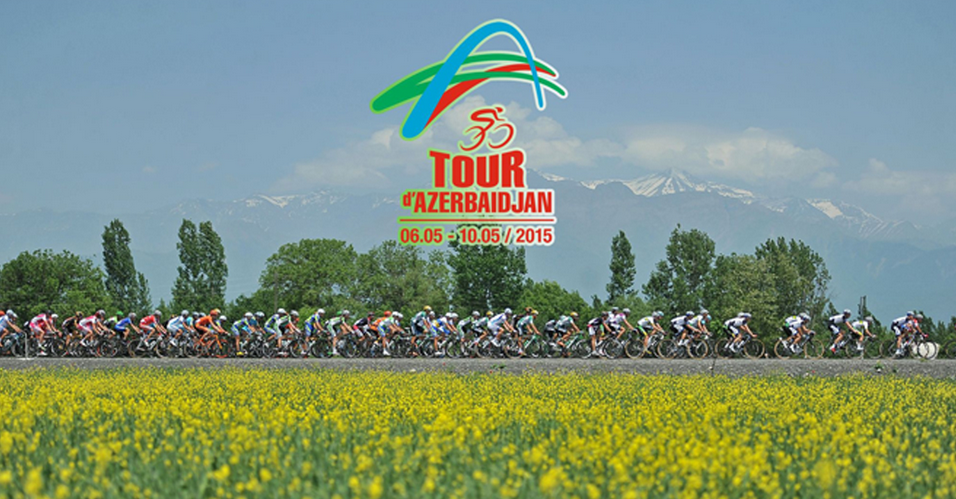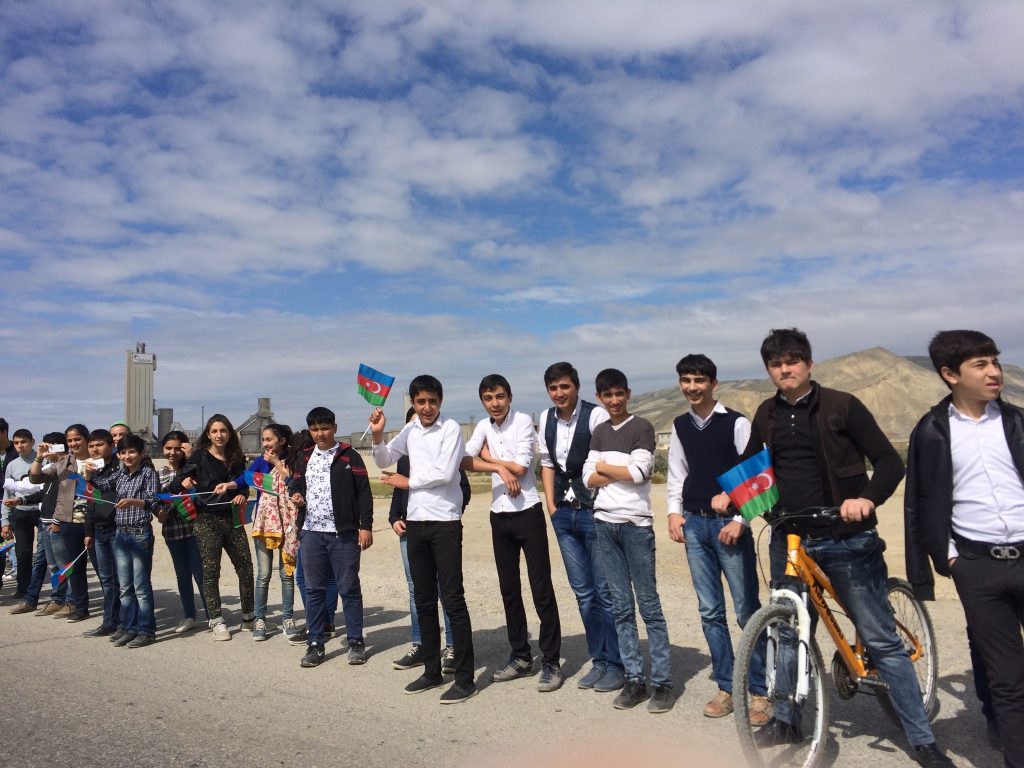Azerbaijan had incredible oil wealth, stunning mountains, and a complex history. What it didn’t have, despite its shimmering glass towers, breathtaking vistas, and the frankly bizarre Kurban Said, was a bike race. In 2012, the Tour d’Azerbaidjan was launched. Yes, complete with Frenchified spelling of the young country’s name.

The goal, as with many other goals of the Azeri state, is good press. The former Soviet republic has only been independent for 24 years and works hard to separate itself in European minds from the other, less wealthy, states of the former Soviet Union. Oil isn’t enough: Baku’s 1901 oil boom brought gorgeous mansions to the shores of the Caspian (and made it a target of German armies in World War II), but there have been many new petro-states in the intervening century. By 1991, Azerbaijan was locked in a war with neighboring Armenia – still largely unresolved – and needed investment in order to keep the state structure alive without support from Moscow. According to Ilham Aliyev, Azerbaijan needed Europe.
The Tour d’Azerbaidjan was part of this European plan. Under Aliyev’s family rule since independence, Azerbaijan has tried to align itself culturally with Europe. This includes state management of complex religious actors as well as cultural spectacle. And since 2012 the country has hosted pan-European events like Eurovision and this past summer’s inaugural European Games in order to beam images of a sunny and sparkly Azerbaijan onto European screens.
It may be difficult to understand what the country has to gain from these spectacles until one speaks to a spectacle-producer. Patrick Redford was flown to the 2015 Tour d’Azerbaidjan for Vice Sports to report on the Tour. A veteran cycling reporter who has covered race and identity in the sport, he found something else entirely in Azerbaijan.
“There isn’t a carpet strand out of place,” Redford said about Baku’s airport in an interview with Ajam MC. “It’s a beautiful building, impossibly slick, all these black glass panels that look like they’re made out of obsidian.” The cyclists Redford was there to cover were fresh from the Tour of Turkey and “just wanted to nap.” As Redford was about to learn, they were more window dressing to showcase the state than the main attraction.

“Cycling is a weird choice of luxury product. It’s a pretty boring TV sport with a slowly contracting money pool,” explains Redford. When asked if the cyclists themselves took a moment to embrace the beauty of Baku and the Caucasus mountains, he says that they simply “never really had time to.” And although Redford himself was quasi-embedded with the American Airgas-Safeway cycling team, he was there as a journalist and treated as such by the race planners:
The tour they gave us was very prescriptive. They showed us the Old City, we rode by the Bibi-Heybat mosque, but the handlers and organizers seemed to really want to show off the future. Stage 5 was centered around the Flame Towers, the Marriott, and the Government House.
This drive-around was not enough to understand the “quasi-religious spectacle” of the Tour. At Ajam MC’s advice, Redford read Slavs and Tatars’ Kidnapping Mountains, which Redford called an “essential” look at the conflicting histories of “those mountains always being someone else’s.”

But Redford makes it clear that “the primary utility was to take Baku to the world.” Sponsors of the Tour d’Azerbaidjan include the state oil company and the state airline. Also sponsoring the race is a group called Bayrağimiz Qürür Mənbəyimizdir, or “Our flag is the source of our strength.” This is a slogan of the nationalist ruling New Azerbaijan Party. The Azeri flag gets blasted to audiences alongside the Azeri mountains and Azeri roads, bringing a nation/land/infrastructure trinity to center stage.
After all, “The purpose of the Tour of Azerbaijan is to exist.” Less important is the winner (in this case, Slovenian Primož Roglič), than the fact that the Eurocentric cycling world takes a trip to Azerbaijan and gives its high-income audiences a glimpse of Azerbaijan’s brand. On the other hand, it’s a symbol of Europeanness for the New Azerbaijan Party’s constituents. Redford notes that “politicians speak about sport as a way to build national morals and drive for pride.”
This leads to an emphasis on the theatricality of sports. “Two stages straight, we started in Gabala. The first day we also ended there and there were masses of kids everywhere in perfectly coordinated outfits. The next day, the finish was elsewhere and the kids were nowhere to be seen. My suspicion is that they are living decorations.” Azeri children got to witness the thrill of sports and their importance to the political project of Azerbaijan. Just as importantly, they were able to be witnessed by HD television cameras gripped by the stage’s finish. When there were no cameras, there were no children.

Or in short, “it was more of a paid advertising pamphlet for Azerbaijan.” Redford’s job was to be a journalist, certainly, and to revel in the spectacle of the course’s gorgeous scenery and Baku’s rich mix of medieval and modern. That said, it was made both quite compelling and incredibly difficult to peek behind the curtain and figure out either why the Tour d’Azerbaidjan existed or what was expected of the cyclists competing in it.
The answer, to both, is to promote Azerbaijan. The event is anything but organic and instead is a production of the former Soviet republic’s nation-building process. Calling it a Potemkin event is not quite accurate — the cycling did certainly happen, was certainly riveting, and paid handsomely to a few dozen professional cyclists for whom it is getting harder and harder to get by.

The Tour d’Azerbaidjan is a spectacle with a target and a message. It attempts to establish Azerbaijan the country as a 21st-century European space thanks to the Aliyev family, the New Azerbaijan Party government and investors in the country. The Tour exists almost as an emblem of confidence, related to the Olympic Games and their displays of infrastructure as well as baubles like England’s royal weddings or Malta’s overwhelming fireworks displays.
The sheer bravado of the Tour runs the risk of sabotaging this message — after all, the planned affair can bring hundreds of children to a finishing line, but it can’t make them return. The sports industry itself cooperates by switching cameras when appropriate and not focusing on the wrong things. Redford’s curiosity allowed him to take a behind-the-scenes look, and his knowledge of cycling let him work with the competitors themselves and understand how they fit into the production of the event.
The truth is that to Azerbaijan’s government, it doesn’t matter who wins and it doesn’t matter where they’re from. All that matters is that the Europeanness of the Tour d’Azerbaidjan is clear, and that the flag stays in the picture.












